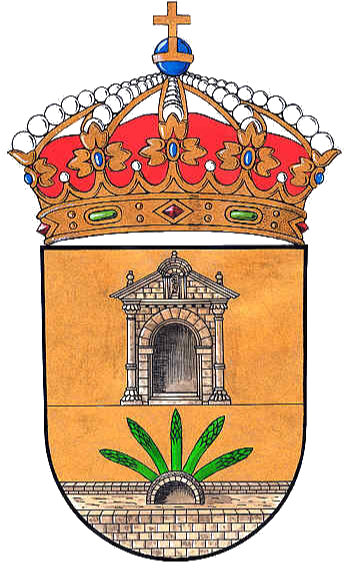When starting a DIY job, selecting the best microcontroller is just one of the most critical choices you’ll make. A microcontroller functions as the mind of your job, taking care of inputs, results, and processes that bring your production to life. Brand names like Dorhea shop supply a selection of microcontrollers created for varied applications, making it much easier to discover the best suit for your needs.
Understand the Requirements of Your Project
Before diving right into microcontroller requirements, detail the particular requirements of your project. Are you building an easy temperature level sensor, a clever home device, or a robotic with complex performances? The extent of your project determines the sort of microcontroller you’ll require, including factors like refining power, memory, and connection choices.
Take into consideration how many input and output pins your task will certainly require. For example, a project calling for multiple sensors and actuators might need a microcontroller with a greater number of GPIO (General Purpose Input/Output) pins. Likewise, if your task involves real-time information processing, you’ll need a microcontroller with sufficient computational power.
Assess Processing Power and Speed
Microcontrollers feature varying levels of processing power, determined in terms of clock rate (MHz) and design (8-bit, 16-bit, or 32-bit). Simpler jobs like blinking LEDs or managing a small servo electric motor may work flawlessly with an 8-bit microcontroller. However, for more requiring applications like image handling or machine learning, a 32-bit microcontroller with a greater clock rate would certainly be vital.
Picking a microcontroller with the best equilibrium of power and speed protects against unnecessary intricacy and expense. Subdued microcontrollers can drain your project’s power supply faster, particularly in battery-operated layouts.
Inspect Memory Requirements
Memory is another critical consideration. Microcontrollers usually have 3 types of memory: Flash, RAM, and EEPROM. Blink memory shops your program code, RAM supports runtime operations, and EEPROM is used for saving information that continues after the gadget is powered off.
If your job involves a huge codebase or calls for saving substantial amounts of information, go with a microcontroller with enough Flash and RAM. Alternatively, simpler tasks with marginal memory requirements can run properly with reduced capabilities.
Evaluate Connectivity Options
Modern DIY jobs commonly call for connectivity features to communicate with other gadgets or networks. Relying on your task, you might need microcontrollers with integrated interaction protocols such as UART, I2C, SPI, or CAN. For wireless connectivity, think about models with incorporated Wi-Fi, Bluetooth, or LoRa capacities.
As an example, if your DIY task entails producing a clever home tool that interacts with a smart device app, you’ll need a microcontroller with Bluetooth or Wi-Fi support. Guarantee the selected microcontroller works with the interaction procedures of your other project elements.
Power Consumption and Efficiency
Power intake is a crucial aspect, specifically for battery-operated or portable jobs. Some microcontrollers are made with energy effectiveness in mind, featuring low-power modes to expand battery life. Assess your job’s power spending plan and select a microcontroller that lines up with your energy needs.
For solar-powered or lasting projects, prioritize microcontrollers with ultra-low power intake. Stabilizing performance and effectiveness ensures your project runs efficiently without frequent battery replacements or too much energy prices.
Reduce of Programming and Ecosystem Support
The simplicity of shows and the accessibility of development devices considerably influence your microcontroller option. Popular microcontroller households like Arduino, ESP, and STM32 include substantial collections, tutorials, and neighborhood assistance, making them beginner-friendly. A solid community can conserve time and reduce the knowing curve, especially for those new to microcontrollers.
Make certain that the microcontroller’s incorporated development environment (IDE) works with your favored programming language. Most microcontrollers assistance C/C++, but some also permit shows in Python or JavaScript, dealing with a broader range of programmers.
Physical Form Factor
The shapes and size of a microcontroller can impact its compatibility with your project. For small styles, take into consideration microcontrollers in smaller sized form factors like QFN or WLCSP plans. Advancement boards, such as Arduino or Raspberry Pi Pico, provide straightforward alternatives with pin headers and pre-soldered elements, ideal for prototyping.
If your task involves integration right into a securely loaded room, pay attention to the physical dimensions and installing alternatives of the microcontroller or its development board.
Cost and Availability
Microcontrollers are available in a wide rate range, from economical alternatives for easy projects to premium models for complicated applications. Establish a budget early and research study versions that fit within your economic constraints. Remember that higher-priced microcontrollers frequently feature advanced attributes, so guarantee you’re not spending for abilities your project does not require.
In addition, think about the schedule of the microcontroller in your area. Choose versions with constant supply levels and trusted distributors to prevent delays in your project timeline.
Testing and Prototyping
If you’re not sure regarding the best microcontroller for your job, begin with prototyping boards that enable testing. Systems like Arduino and ESP32 supply flexibility to examine numerous functionalities prior to finalizing your style. These boards frequently feature additional peripherals and a big support area, enabling rapid development and troubleshooting.
Conclusion
Choosing the ideal microcontroller for your DIY job includes stabilizing technical requirements, task demands, and monetary restraints. By recognizing the core demands of your job and assessing variables such as processing power, memory, connection, and power efficiency, you can make an informed choice. With mindful preparation and trial and error, the appropriate microcontroller will certainly work as the structure for a successful DIY creation.

